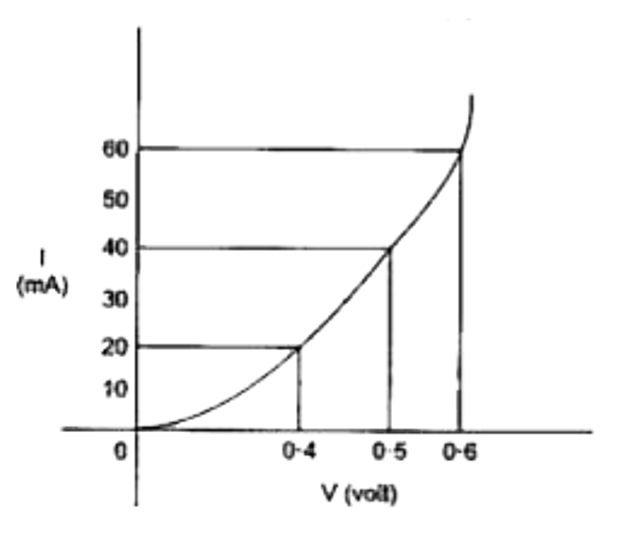Figure shos the characteristic curve of a junction diode. Determie the d.c. and a.c. resistance of the diode, when it operates at 0.3V.
Text Solution
The correct Answer is:NA
|
Topper's Solved these Questions
Similar Questions
Knowledge Check
The V-I characteristic of a silicon diode is shown in figure . The resistance of the diode at ID=15 mA is
 A5ΩB10ΩC2ΩD20Ω
A5ΩB10ΩC2ΩD20ΩThe V-I characteristic of a silicon diode is shown in figure . The resistance of the diode at ID=15 mA is
 A5ΩB10ΩC2ΩD20Ω
A5ΩB10ΩC2ΩD20ΩThe slope of plate characteristic of a vacuum diode is 2×10−2mA/V. The plate resistance of diode will be
A50ΩB50kΩC500kΩD500kΩ
The volt-ampere characteristic of a silicon diode is shown in fig. Determine the resistance of the diode at (i) ID=20mA and (ii) VD=−10V.

View SolutionThe V-I characteristics of a silicon diode is shown in the Fig. . Calculate the resistsnce of the diode at ID=15mA and VD=−10V.

View SolutionThe characteristic curve of a silicon diode is shown in Figure 5 below:

Calculate the resistance of the diode at:
(1) I =15 mA and
(2) V= - 10 V
View SolutionIn the voltage current (V-l) characteristics of junction diode (figure) the point A and B corresponds to

View SolutionThe i - V characteristic of a P - N junction diode is shown below. The approximate dynamic resistance of the P - N junction when a forward bias of 2 volt is applied

View Solution


